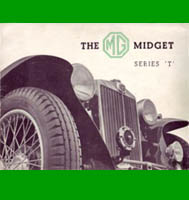Basic Information On M.G.'s First T Series Midget.
In June of 1936 The Motor ran an article announcing a new M.G. "Series T" Midget replacing the much loved P Types. And by early in 1939, when the last of this Series rolled off the line, The M.G. Car Company Ltd. of Abingdon, England had produced 3003 TAs. There were two roadster type body styles produced during the run. The earlier version carried a wider gasoline (petrol) tank and had narrower rear fenders (wings) than the later model. The later models also changed from outer laced to center laced spoke wire wheels. Two other body types were produced in very small numbers, an Airline Coupe and a popular Tickford Drophead Coupe by Salmons and Sons. The MPJG engine used in the TA was derived from the Morris 10 push-rod engines that were currently in use by the parent company, the Nuffield Group. Top speed was in the neighborhood of 80 mph. The TA was the first of the Midgets to use hydraulic brakes.
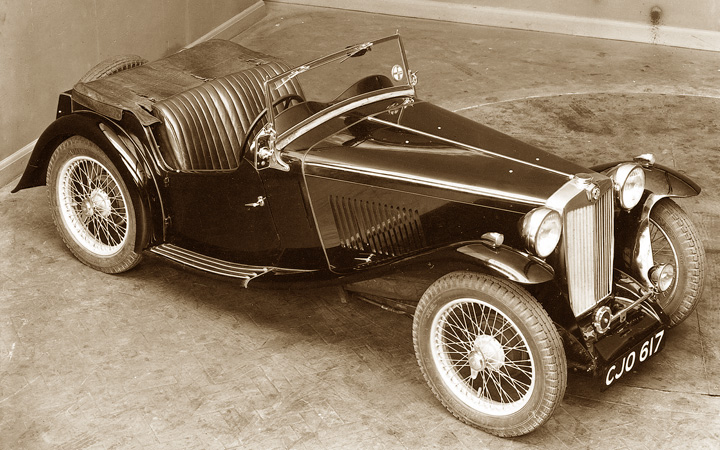
It's been written that many of the marque's die-hard followers of that era had a difficult time accepting the push-rod engined M.G.s over the previous overhead cam engines. The 'cammys' were faster revving engines than the push-rod MPJG. And the P Types, which preceded them, had reached their maximum BHP at 5,500 RPM. But the TA had terrific torque and was soon holding its own in Trials, Hill Climbs and sporting events of the day. The TA would be followed by the TB, TC, TD and TF. All of which used a newer designed (XPAG) engine that was more suited to tuning.
This site is primarily dedicated to the original MPJG engined M.G. TA.
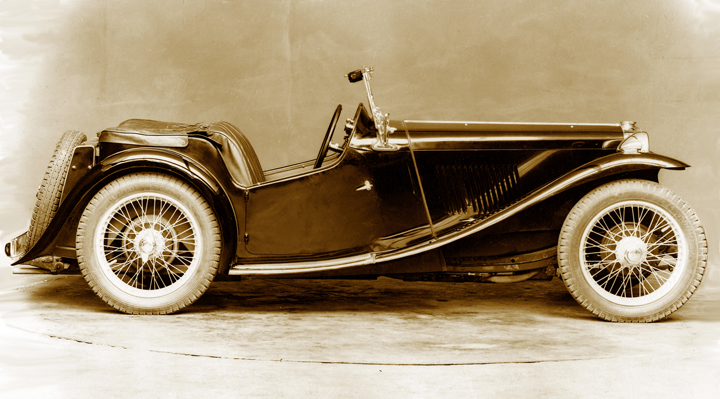
The two photos above were factory T Series prototypes.
When first introduced to the public the TA was known simply as the T Type M.G. Only after the XPAG engine was fitted into the T Type chassis, creating the TB, did the title "TA" come into popular use.
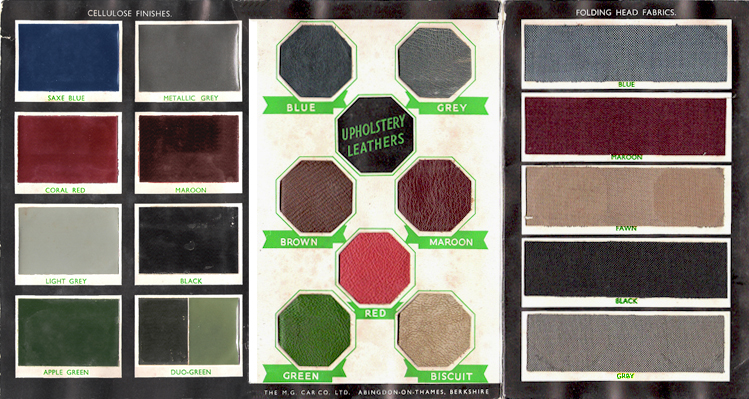
Period (Pre War) Paint, Upholstry and Hood Colors Offered
Although these colors were standard it was possible to order a car from the Works and delivered in whatever color, paint, upholstery, or hood that one wished. Even wheel color, though silver cellulose was standard for those.
A more concise history of the TA, various other T Types, and the M.G. Car Company can be found in many books or on the Internet.
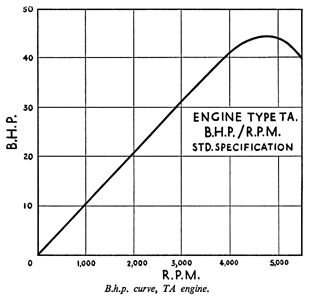
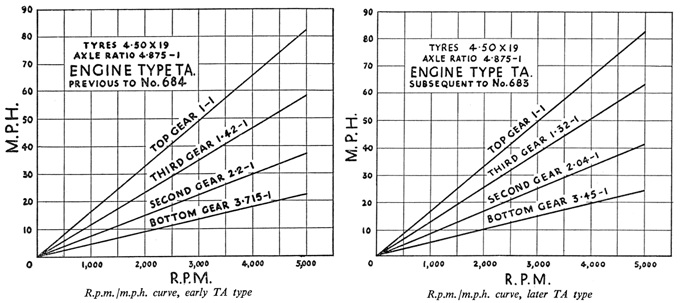
Above are the Brake Horse Power Curve
and Miles Per Hour for Revs Per Thousand.
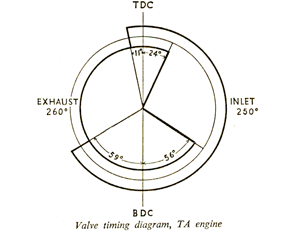
Valve Timing for the MPJG.
The diagrams above are from Philip H. Smith's book Tuning and Maintenance of M.G.s.
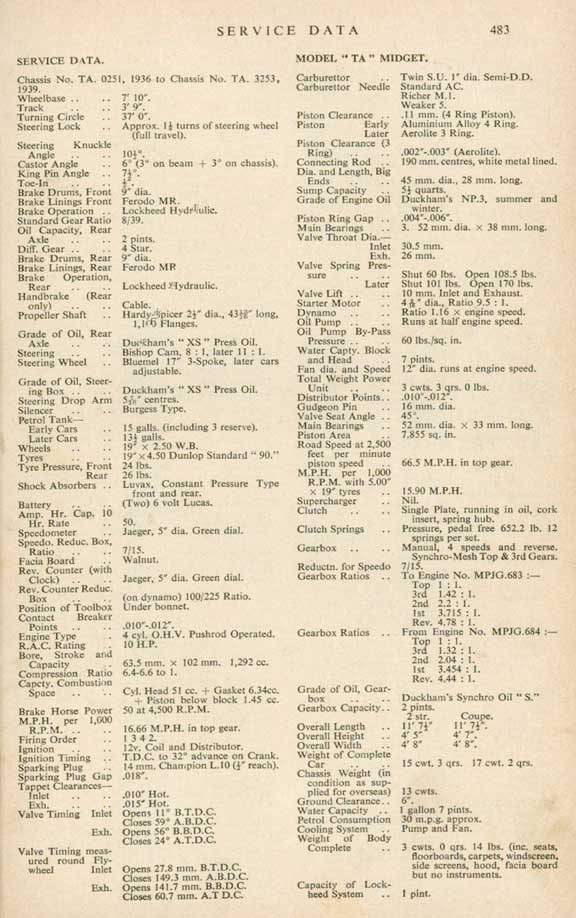
This page of Service Data is from The M.G. Workshop Manual by W.E. Blower.
Visually comparing the TA to the TC
TAs are often mistaken for TCs and rightly so for both are almost identical in size and appearance. The basic design for the T Series cars came from the 1933 Swept Wing J2 and carried through to the P Types. The Ps were slightly larger than the Js but smaller than the TA. TC production outnumbered the TA well over three to one and soon after the end of WWII, thanks to 'Export or Die', new M.G.s were finding their way into the States by the hundreds.
A quick glance at the number of running board strips will often tell the difference between the TA and TC. The TA has three strips where the TC has two. Another distinguishing difference would be noting how the rear springs attach to the rear of the chassis. The TA (and TB) used sliding trunnions at the rear of their springs for suspension where the TCs were attached with shackles. Also an easy-to-spot feature is the Fuel Reserve knob on the dash, to the right of the tachometer. The TA/TB has two fuel lines leading from the tank - One Main and one Reserve. These lines terminate at a petcock mounted to the tool box inside the engine compartment which is controlled by the knob on the dash.
Another easily visible difference between TA and TC is the front shocks. The TA uses round disk-looking hydraulic shocks with an arm coming from the center where the TC shock looks like a horizontal iron cylinder with an arm coming from its center. The shock absorber test is not always reliable in telling them apart however, as several TAs have been converted to TC shocks. And both TA and TB Types (as well as TCs) are sometimes seen fitted out with modern vertical tube type shock absorbers.
Once the hood (bonnet) is opened however, the differences between the TA and TC become quite clear. At first glance the MPJG TA engine looks to be a bit taller and narrower. The water pump extends further forward and is mounted to the head where the XPAG TB/TC pump mounts into the block just beneath the head. The air cleaners are mounted differently and the carburettors on most of the TA models were bronze bodied SU rather than the aluminum look of those used on the TB/TC. And the oil filter of the TA is not as large in diameter as that on the TC.
Using these guidelines one should be able to identify an original MPJG-engined TA rather easily. Distinguishing a TA from a TB can get a little tricky considering that several TAs now have XPAG engines! Here I'd resort to looking at maker's plate located on the passenger's side of the tool box. Definitive identification of all T-ABC car's 'VIN' or Chassis Number- will be found on the outside of the left front dumb iron. As; TA0256, TC10000, etc.

